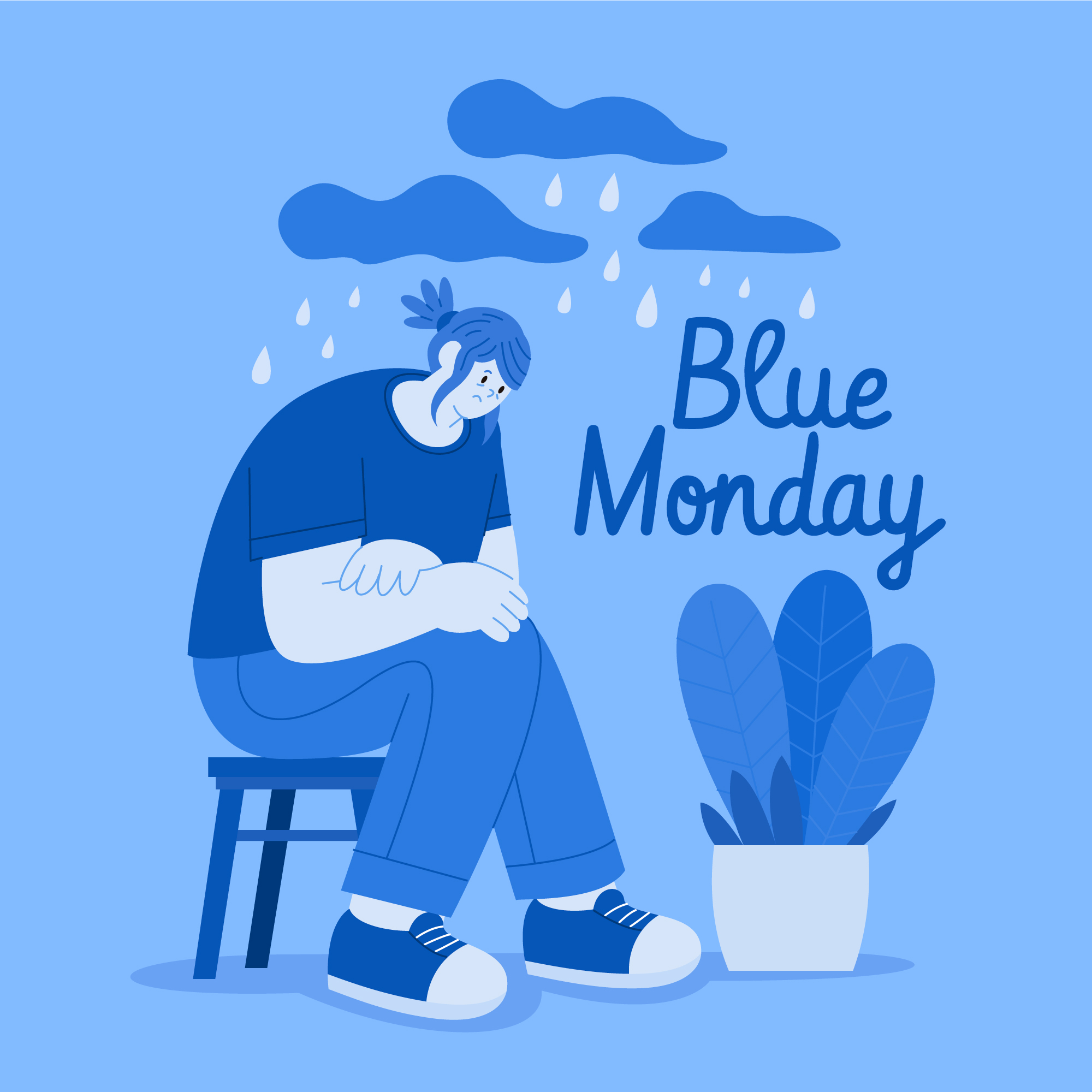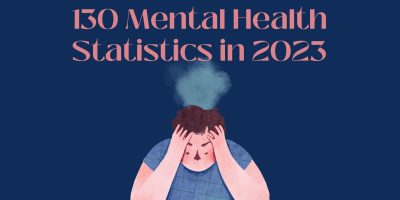
Are the Most Stressful Jobs Worth It?
Is a high-earning job worth it if you don’t have enough free time to enjoy its benefits?


LMHC & Therapist at The Therapy Room Mind Health and Wellness

Director of Marketing of Flex HR

Executive Director of Content & Learning at meQuilibrium

HR and Managing Director of AED Training

LCPC, EMDR Trauma Therapist at Mindset Quality
Once the holidays are over and the thrill of the new year expires, picking up where we left off at work may seem challenging and sometimes even dreadful.
‘Tis the season of the January Blues.
Research from Redbooth and Priceonomics shows that January is the least productive month. It has the lowest task completion percentage at 7.2% compared to the highest (October) at 9.5%. The study also reveals that winter is the least productive season, sitting at just 22.8%.
An annual phenomenon that causes people to feel lethargic and unmotivated, January Blues creeps into every aspect of our lives, and the workplace is no exception. Energy plummets, and by the third week, we enter the most depressing day of the year, Blue Monday.
Understanding why and how it happens can aid companies in choosing the right support system for their employees and help them navigate the most challenging month and day of the year.

January Blues, or Blue January, is a term that refers to the feelings of melancholy, tiredness, and lack of motivation at the beginning of the year. Typically, it’s associated with the end of the holiday celebration and the return to regular day-to-day routines.
In the aftermath of Christmas, between holiday expenses and transitioning back to work, this can cause employees emotional and financial strains. As cold and long January sets in, weather challenges and minimal daylight contribute significantly.
However, behind the anecdotal meaning, January Blues brings forth an underlying mental health concern – Seasonal Affective Disorder (SAD), otherwise known as seasonal or winter depression.
Linked with a biochemical imbalance in the brain due to receiving less sunlight during the day, especially in the northern hemisphere, late fall and winter are the peak hibernation seasons that contribute to this condition.
According to the American Psychiatric Association (APA), SAD affects 5% of the U.S. population. However, while this is an average estimate, the actual number depends on the region.
For example, in Florida, SAD affects 1% of the population, while in Alaska, as it’s in the northern parts of the U.S., the number goes up to 10%.
Many of the symptoms coincide with a major depressive disorder, including:
Although SAD can be the culprit behind the post-holiday lethargy, people experiencing Blue January don’t necessarily have winter depression. However, persistent severe symptoms might indicate a more pressing mental health condition.
Thus, it’s essential to understand when and how companies should interfere.
Before we explore the importance of tackling this issue in the workplace, let’s unravel the mystery behind another phenomenon that unfolds during this period – Blue Monday.
So, what is Blue Monday in January?
Blue Monday falls on the third week of January and is said to be the most depressing day of the year.
Initially, it emerged as a marketing trick for booking a holiday.
Psychologist Cliff Arnall coined the term in 2004 at the request of the travel company Sky Travel, seeking a ‘scientific formula’ to explain the post-holiday lethargy. In its quest for answers, Arnall weighed all major factors contributing to January Blues to determine when people are least motivated and happy.
Since its mention, Blue Monday has become a staple of mainstream culture, sparking a discussion on the challenges of the post-holiday period.
Despite its contested scientific basis, the concept resonates with individuals experiencing the winter blues, initiating a much-needed conversation on mental health, especially in the workplace.
“At the height of seasonal depression with winter in full swing, January blues can follow the holiday season,” says Katie Bergman, LMHC and Therapist at The Therapy Room Mind Health and Wellness.
Bergman adds, “Credit card bills start rolling in, and with spring so far away, it’s easy to see how productivity in the workplace might be dismal.”
However, while productivity does plummet during this period, winter blues raises concerns about employee health, not only in January but all year long.
Wellness statistics show that 61% of employees feel stressed and burned out.
Also, they were seven times more likely to have suffered anxiety, depression, and stress over the last two years.
Adding to this, Blue Monday and Blue January become more than buzzwords.
These phenomena require the utmost attention in the workplace and actionable strategies that companies and their employees can adopt before, during, and after the least productive season.



We know how, why, and when it happens.
So, what better solution than to be prepared before January comes?
In the prelude of the winter melancholy, crafting a plan is an essential strategy for preventing or overcoming post-holiday stress.
For example, for employees, budgeting for holiday expenses can mitigate the financial strains, leaving one less thing to worry about during this month.
Moreover, setting realistic and attainable personal goals is essential to bring a sense of reward when completed. Contrary to this, overly ambitious New Year’s resolutions can backfire, adding to the pressure of an already challenging period.
Katie Bergman advises the same for organizations.
“January is the perfect time for goal setting and inspiration,” says Bergman.
“Set aside time for your team to reflect on the past year’s achievements as well as look to the new year with an attitude of inspiration. By setting attainable goals, professionally and personally, you can assist your team in accountability while maintaining productivity.”
Another tip for the workplace is to prioritize tasks and projects before Christmas. That can reduce last-minute pressure and help for a smoother back-to-work transition.

Once January settles in, taking proactive measures can help navigate the workplace’s lethargy and lack of motivation.
Self-care and self-focus activities take center stage.
For example, setting aside time for hobbies and personal relationships and practicing healthy habits.
During this time, work-life balance is vital for stress reduction.
“Self-care is not pedicures and massages,” says Katie Bergman.
“Encouraging your team members to engage in sustainable self-care routines such as physical activity, adequate nutrition, mental health support, hydration, engagement in hobbies, setting clear boundaries, and learning to say “no” when necessary to avoid overcommitting will ensure team members maintain optimal mental and physical health routines.”
Physical activity is another aspect worth looking at.
Many studies reaffirm the positive association between mental health and exercise, revealing that the top three types that help the most are general physical activities, cardiovascular physical activity, and yoga. That means even light aerobic exercise or YouTube workouts can be a great at-home solution for dealing with Blue January.
As for workplace-friendly solutions, employees can leverage support services such as mental health counseling, wellness initiatives, or Employee Assistance Programs (EAPs) for emotional assistance or health challenges, fitness trackers, and gym memberships to support employees’ physical health.
Open communication about workload concerns is another critical aspect that fosters awareness of the issue and its effects.
January Blues can sometimes push employees to overwork themselves to counteract the seasonal productivity slum, exacerbating workaholism and its mental toll.
Thus, encouraging a healthy work-life balance becomes paramount.
Some coping strategies to consider are creating clear task lists, setting workplace routines and realistic deadlines, introducing more breaks to manage burnout, clear communication, etc.
“It can be isolating and disappointing coming off the holiday highs when jumping back into work, knowing there is nothing but a big workload to come back to,” says Jamie Sieja, Director of Marketing of Flex HR.
“Whether employees are working remotely or not, interaction with co-workers plays a key role in knocking down some of those January Blues.”
Despite sometimes feeling like an eternity, January and the winter melancholy eventually pass.
Yet, maintaining good mental health should be a year-long commitment.
In the aftermath of the January Blues and Blue Monday, it’s time to reflect on what has been done, what worked, and what can be improved.
Since there isn’t a one-size-fits-all solution in the workplace, feedback is everything.
Assessing the impact of company initiatives and suggesting improvements creates a collaborative and supportive workplace culture and tackles issues like productivity and worker well-being.
Although encouraging regular exercise or introducing more breaks can help, employers should implement comprehensive company initiatives beyond these tips and strategies to help employees improve their well-being and battle depression at work.

As productivity plummets and mental health concerns rise, employers grapple with the consequences of Blue January.
Traditional approaches like team-building activities may fall short, prompting industry experts to advocate for radical shifts in work culture.
So, as we approach the season of giving, what can employers give to their workforce?
“At meQ, we’re kicking off a January challenge on tiny habits to boost your health,” says Alanna Fincke, Executive Director of Content and Learning at meQuilibrium.
She adds: “The keys to supporting employee well-being and productivity, especially in the post-Holiday January Blues, include fostering open communication, practicing empathy, reminding people of the resources available to them, and injecting some positivity into the workplace.
That can look like, for example, encouraging employees to maintain healthy habits.
So, consider organizing a reset challenge to motivate people.”
Considering the challenges of Blue January, including anxiety and depression at work, HR and Managing Director of AED Training, Mark McShane, underscores the need for companies to invest in employees’ mental well-being actively.
“Promoting mental health awareness via workshops and training sessions not only dismantles stigma but also fosters open dialogue about these critical issues.
Companies that offer flexible work arrangements—like remote work options or adjusted schedules—ease stress for employees contending with challenging conditions.
Furthermore, they can grant access to counseling services, Employee Assistance Programs (EAPs), and mental health resources; all these efforts ensure robust support structures are in place.
It is essential that companies also enhance the office ambiance: larger windows, LED lightbulbs, and strategically placed lamps often suffice.
Moreover, encouraging regular outdoor breaks revitalizes employee well-being. Ample light and brightness boost mood and energy levels, effectively combating the winter blues.”
Finally, creating a positive culture and environment could help employees be happier at work and battle negative emotions.
According to Arielle Jordan, LCPC, EMDR Trauma Therapist at Mindset Quality, fostering resilience is key.
“Encourage open communication, establish peer support networks, and promote work-life balance.
Consider wellness initiatives like mindfulness sessions or team-building activities to boost morale.
Additionally, providing flexibility and acknowledging individual needs can contribute to a positive and resilient work environment.”
Jordan further advises: “Encourage regular check-ins, provide resources on stress management, and consider offering workshops or sessions focusing on coping strategies.
Recognizing the challenges of the post-holiday period, creating a supportive atmosphere that acknowledges and addresses these feelings is crucial.“
“Companies need to stay ahead of the January Blues by first recognizing this is an actual thing and being supportive and considerate of their staff,” says Jamie Sieja.
Whether it’s investing in mental or physical health, raising awareness, or improving workplace practices, these initiatives should support a culture that encourages a positive mindset in employees.
Providing such resources and the very necessary encouragement can create positive anticipation rather than January dread.
However, despite having good intentions, it’s crucial to steer clear of toxic positivity as it can backfire. Usually, this happens when management ignores real concerns and brushes them off as, in this case, a fleeting feeling.
Unfortunately, the lethargy around the holidays may hide a deeper problem in the workplace, especially in more stressful job environments.
In fact, statistics show that 22% of Americans have experienced depression symptoms. Even more concerningly, almost 5% of adults in the U.S. experience these feelings regularly.
Thus, recognizing January Blues as a potential sign of a bigger issue is crucial in setting year-round support systems and helping employees and employers navigate these challenges.
Disclosure: Some of the products featured in this blog post may come from our partners who compensate us. This might influence the selection of products we feature and their placement and presentation on the page. However, it does not impact our evaluations; our opinions are our own. The information provided in this post is for general informational purposes only.
Content Writer at Shortlister
Browse our curated list of vendors to find the best solution for your needs.
Subscribe to our newsletter for the latest trends, expert tips, and workplace insights!

Is a high-earning job worth it if you don’t have enough free time to enjoy its benefits?

Uncover the pressing realities of mental health through insightful statistics, highlighting the urgent need for comprehensive support and awareness.

There are many ways to explain what a workaholic is – the most superficial portrayal is someone who can’t stop working. But when it comes to mental well-being, work engagement, and overall health, is workaholism a good or a bad thing?

How important is building relationships and social wellbeing to our health? Do social connections translate to a more satisfying and productive work experience?
Used by most of the top employee benefits consultants in the US, Shortlister is where you can find, research and select HR and benefits vendors for your clients.
Shortlister helps you reach your ideal prospects. Claim your free account to control your message and receive employer, consultant and health plan leads.